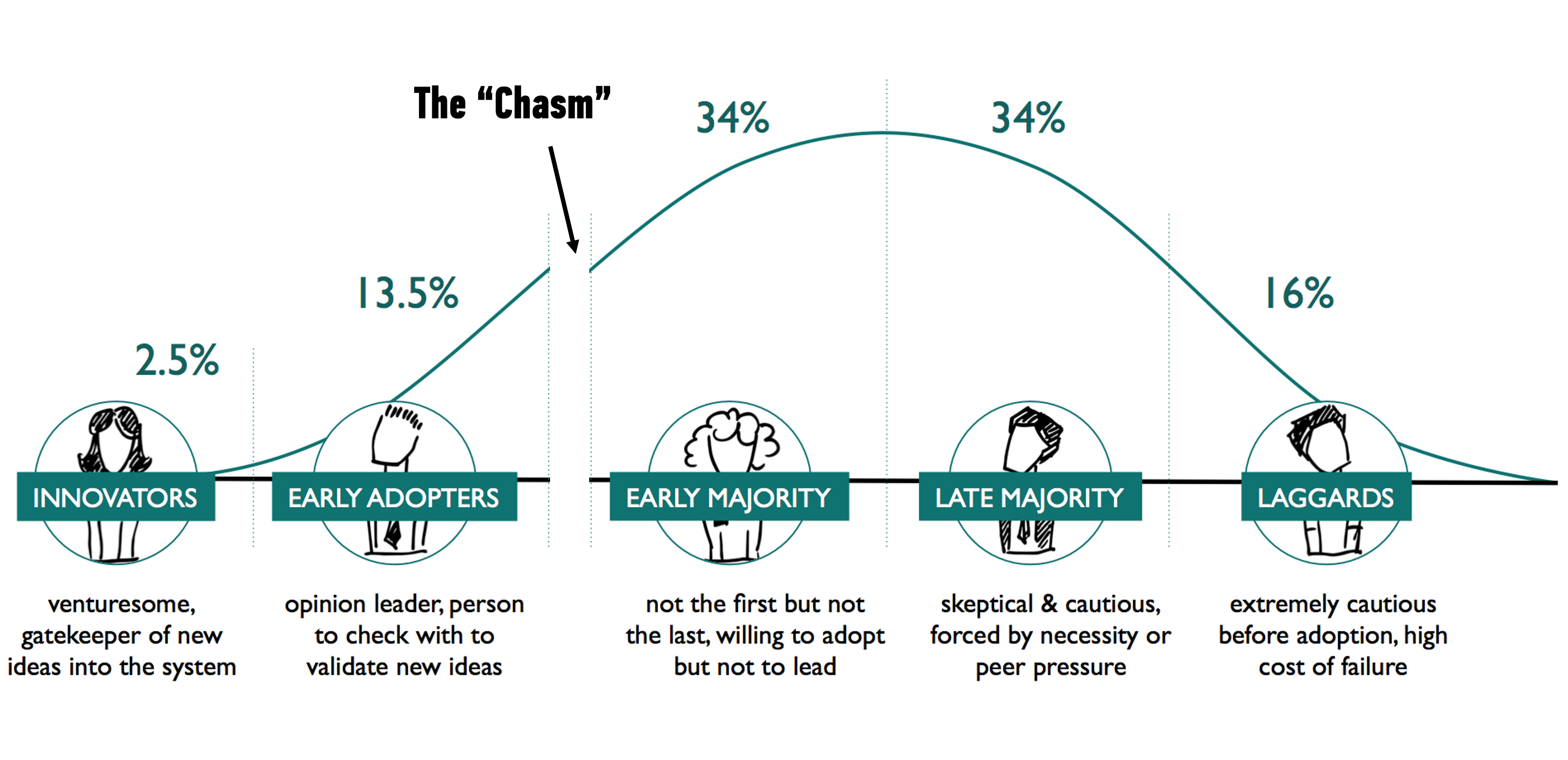Focus on the first 20% of the market
March 05, 2013
The part of the diffusion curve from about 10 percent adoption to 20 percent adoption is the heart of the diffusion process. After that point, it is often impossible to stop the further diffusion of a new idea, even if one wished to do so.
-E.M. Rogers, Diffusion of Innovations.
Geoffrey Moore and Malcolm Gladwell have used terms "crossing the chasm" and "tipping point" to describe the point when a new product or service reaches mass adoption and experience a period of rapid adoption often described as "hockey stick" growth.
The terms that Moore and Gladwell use can be traced to the social science theory developed by E.M. Rogers in 1962. Rogers formulated the Diffusion of Innovation (DOI) Theory to explain how new innovations (ideas, behaviors, or products) spread, or diffuse, through a population. The diffusion happens systematically, first by people who are more apt to try new innovations and followed by those who adopt an innovation later.
People who are more apt to try new innovations tend to be venturesome, willing to try in new concepts or ideas, and are seen as opinion leaders within their social sphere. These venturesome people make up 16% of the population (Innovators and Early Adopters) whereas the remaining 84% are comprised of people who require some convincing before trying out new things (Early Majority, Late Majority, and Laggards).

The separation between those who are apt to try new things and those who are not is the "chasm" that all innovations must cross. Success and failure will require 2 critical components:
-
Articulation of "what's possible and why" the innovation is necessary to solve the problems that the Innovators and Early Adopters face. These groups tend to be technical and simply require information to understand the "how" before adopting a new innovation.
-
Generate evidence and successful stories of adoption and use of the innovation from the Innovators and Early Adopters to convince the Early Majority to adopt the innovation. Even better if the former groups are willing to promote the innovation.
By the time an innovation has been adopted by 20% of the population, mass adoption will begin to take place and propel the innovation on the hockey stick growth trajectory.